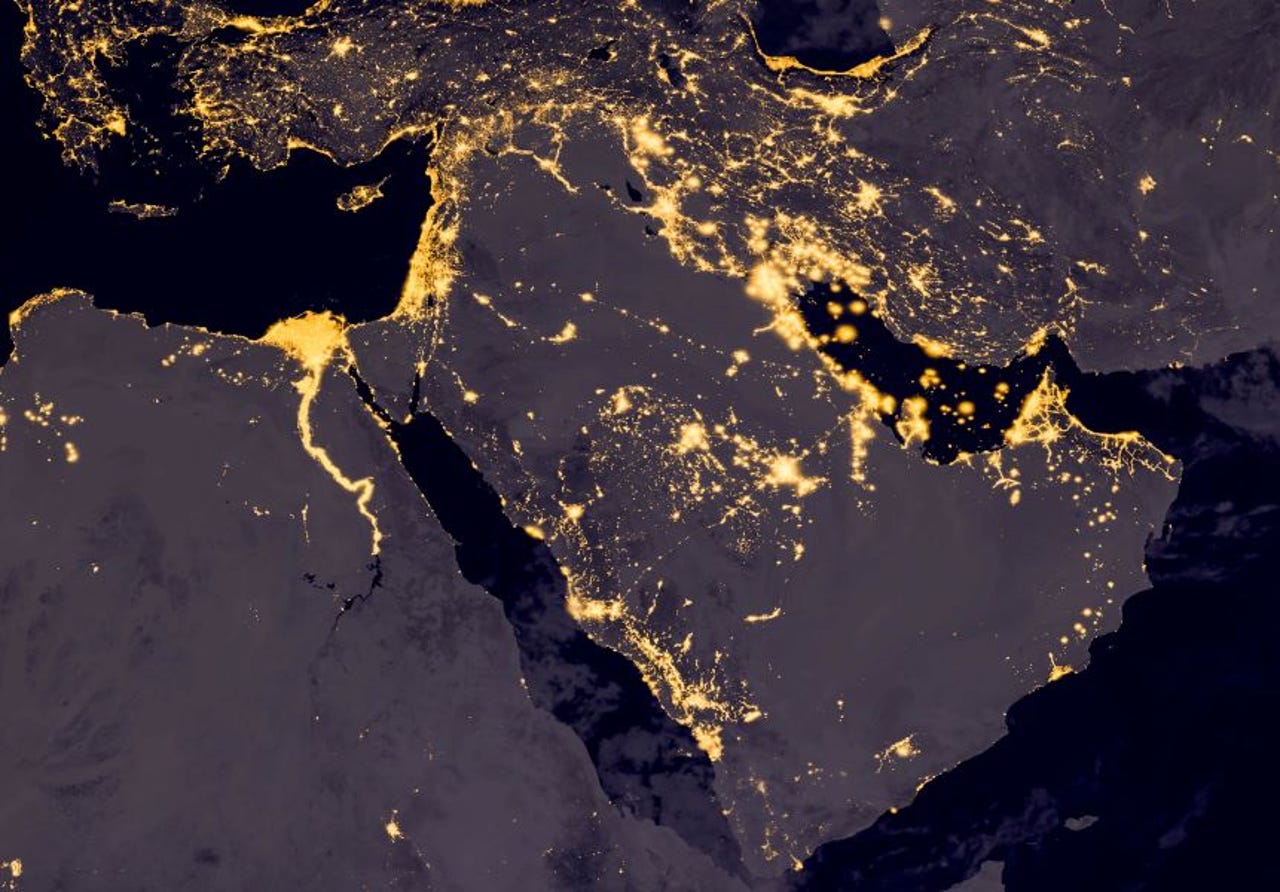Tech in 2022: The biggest trends shaping the digital future of the Middle East


It's been a bumper year for innovation in the Middle East.
COVID-19 has helped to herald a new era of digitisation across the Middle East and North Africa (MENA), transforming consumer behavior and investment in sectors such as e-commerce, education and FinTech.
This looks set to continue in 2022, although its impacts may vary.
Going all-in on AI
The past 12 months have been a big year for artificial intelligence (AI) in the Middle East, as the region continues to explore opportunities for innovation and adoption. IBM previously estimated AI could contribute more than $300bn to Middle East GDP by 2031, with the UAEcalculating AI could add $182bn to its economy by 2035.
SEE: Innovation is hard. Here are five ways to make it easier
This year, Egypt and Turkey published their first national AI strategies, notes Dubai-based Carrington Malin, an entrepreneur, marketer and writer focused on emerging technologies.At the same time, "governments in Saudi Arabia and the UAE have been diving deeper into how to enable the implementation of different AI technologies for public and commercial use.
"Perhaps one of the boldest moves by the UAE government was to approve the use of facial recognition to access public and private sector services," Malin adds.
A number of new sectors and services have facial recognition. This includes the 'UAE Pass' digital services app, where biometric face recognition enables users to access more services provided by government agencies.
Abu Dhabi Islamic Bank (ADIB) and Mashreq NEO both launched services allowing residents to open bank accounts using facial IDs registered with the country's Ministry of Interior, while retailers have also begun rolling out AI solutions and robotics.
Companies are also developing autonomous delivery services, with Carrefour and Adnoc Distribution recently opening their first cashierless retail stores. These stores could prove to be the litmus test for the future of autonomous stores in the region, Malin says.
5G take-up continues, but challenges are on the horizon
Another area witnessing growth this year is 5G. According to GSMA Intelligence, the Middle East had 20 5G networks available across nine countries by the end of 2021.
By 2025, GSMA Intelligence predicts that there will be 42 million 5G connections in MENA, akin to 7% of total connections in the region.
That figure is projected to be considerably higher in the Gulf Cooperation Council (GCC) region, GSMA's head of the Middle East and Africa, Jawad Abbassi, tells ZDNet: "By 2025 there will be 17 million 5G connections, 21% of total connections [in the GCC]."
Increased smartphone connections will account for much of this growth. Despite global supply issues, 5G devices accounted for 35.4% of smartphones shipped to the GCC region in Q3 2021.
Early investment in 5G networks has also helped to lay the foundations for this network activity. Countries such as Bahrain, Kuwait, Oman, Qatar, Saudi Arabia and the UAE were pioneers in providing 5G, Abassi says. "Their governments and regulators recognised the need for 5G spectrum to be made available on investment-friendly terms, enabling mobile operators in these countries to deploy some of the world's first 5G networks."
SEE: Technology in the Middle East: 21 key stats on the good, the bad and the ugly
However, more 5G spectrum is needed. Without it, costs will go up and the full benefits of 5G will go unrealized. "Limited spectrum will require operators to deploy additional base stations to meet traffic demand and this can have an impact on further investment in geographic roll-out, grade, and quality of services and prices."
Startup spending continues its upward curve
By the start of December 2021, more than $2.5bn had been invested into regional startups, reported the Digital Digest, a digital business news aggregator for the region. This included $270m invested across 74 startups in November, and 517 investment deals across the year.
Aside from the fact that we are still in the midst of a global pandemic, what's all the more remarkable about this growth is that annual investment in MENA startups only hit $1bn for the first time in 2020.
Number of investments in MENA region, Jan-Nov 2021.
One reason for this growth, according to Ramez El-Serafy, CEO of Flat6Labs, is that the region is beginning to see "mega-rounds" of investment that it wasn't before – often upwards of $10-20million.
Startups are also moving to Series A funding more quickly, says El-Serafy. Meanwhile, companies are increasingly raising capital to expand in several markets across the region simultaneously. This expansion means that "innovation can spread across borders more quickly than before."
"This market is so hot," adds Dina El-Shenoufy, Flat6Labs' CIO. She ascribes this "sudden shift in valuations" to excitement about the potential of startups in the market (Dubai-based Swvl became the first Middle East unicorn to list on the Nasdaq earlier this year) and a sense that the region's digital economy is "catching up" with more developed markets.
El-Shenoufy predicts that the huge uptick that started in 2021 will continue well into 2022.
IT spending will continue to grow… modestly
According to the tech analysis firm Gartner, IT spending in MENA will continue to grow next year, but at a marginally slower rate than in 2021.
Nevertheless, with $170 billion forecast to be spent on IT in 2022, spending will still exceed pre-pandemic levels, led by investments in IT services and expenditure on software.
Underpinning much of this growth is the continued efforts of countries in the GCC to migrate from oil-exporting economies to a knowledge-based economy, notes Miriam Burt, managing vice president at Gartner and the firm's GCC research lead.
The only IT segment expected to witness some slippage in spending is devices, following an initial surge in investment last year as businesses adapted to the realities of pandemic-era working needs.
Forecasts focused on a longer lead time posit an even more positive picture for IT spending.
IDC projects digital transformation investments in the Middle East, Turkey, and Africa (META) will double between 2020 and 2025. Growing at a compound annual growth rate of 16.6%, IDC anticipates this spending will be worth $58 billion a year in 2025 – around 40% of IT spend across MENA.
SEE: CIO priorities: 10 challenges to tackle in 2022
These digital-first efforts "will strive to develop resiliency by aggressively leveraging technologies such as cloud, AI, digital infrastructure, IoT, and security, among others," says Jyoti Lalchandani, IDC's group vice president and managing director for the MENA region.
These moves, coupled with further IT-led developments in areas such as e-commerce, e-sports, transport tech, tackling COVID and other mega projects, mean MENA's tech scene continues to be one to watch through 2022 and beyond.